Ceremony to announce the transformation of Mercy Convent
On May 31, 2023 a simple, yet profound event took place in the bare-bone space of the former Mercy Convent in St. John’s, NL. The Institute of the Sisters of Mercy, a Roman Catholic order of women religious, was founded in Dublin in 1831 by Catherine McAuley. Three sisters of Mercy travelled from Dublin in 1842 to found a convent in St. John’s. For about 15 years the sisters lived in a wooden structure built as a convent by Bishop Fleming who invited sisters to come to Newfoundland.
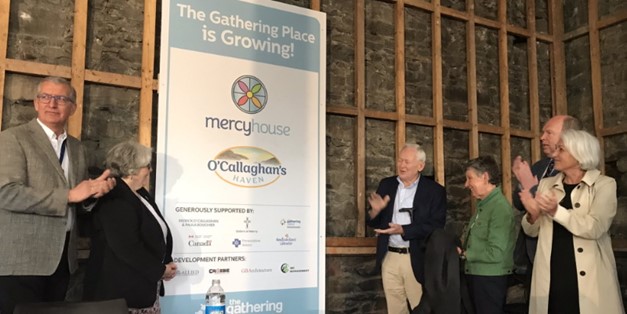
The Mercy Convent structure today was constructed in 1857 and served as a convent up to 2021. Over the past months the building has been stripped to its foundational structure. Olympic Construction has begun the renovation to the building to transform it into a shelter and supportive housing structure that will accommodate 90 persons in need of temporary and transitional housing. It is hope that the project will be completed by June 2024. Day to day support services will be offered by The Gathering Place.
The Sisters of Mercy and the Presentation Sisters, as well as church parishes in the area, Roman Catholic, Anglican, United Church of Canada, and Presbyterian as well as other groups concerned about hunger, health, housing and social isolation of a large population in the central area of St. John’s joined forces in the early 1990s to envision a centre to serve the population in need of care and services. The Gathering Place opened in 1994 with basic food provision and social centre located in a vacant school building that had been refreshed for this new purpose. Since that time space and services and those seeking help increased exponentially and continue to do so. Now permanent supportive housing in this renovation project has been added to the services of The Gathering Place.
Media Coverage of the event
Watch: NTV Broadcast: https://ntv.ca/former-mercy-convent-soon-to-be-converted-into-shelter-for-the-gathering-place/ (3:03)
Read: CBC text: https://www.cbc.ca/news/canada/newfoundland-labrador/gathering-place-two-million-dollars-new-housing-1.6860584
VOCM coverage: https://vocm.com/2023/05/31/gathering-place-converting-former-mercy-convent-to-expand-operations/
See below Mercy Convent Before and After Renovation as Shelter and transitional Housing (17:29)
Ceremonia para anunciar la transformación del Convento de la Misericordia
El 31 de mayo de 2023 tuvo lugar un acontecimiento sencillo, pero profundo, en el espacio desnudo del antiguo Convento de la Misericordia de St. El Instituto de las Hermanas de la Misericordia, una orden católica romana de religiosas, fue fundado en Dublín en 1831 por Catalina McAuley. Tres hermanas de la Misericordia viajaron desde Dublín en 1842 para fundar un convento en San Juan. Durante unos 15 años, las hermanas vivieron en una estructura de madera construida como convento por el obispo Fleming, que invitó a las hermanas a venir a Terranova.
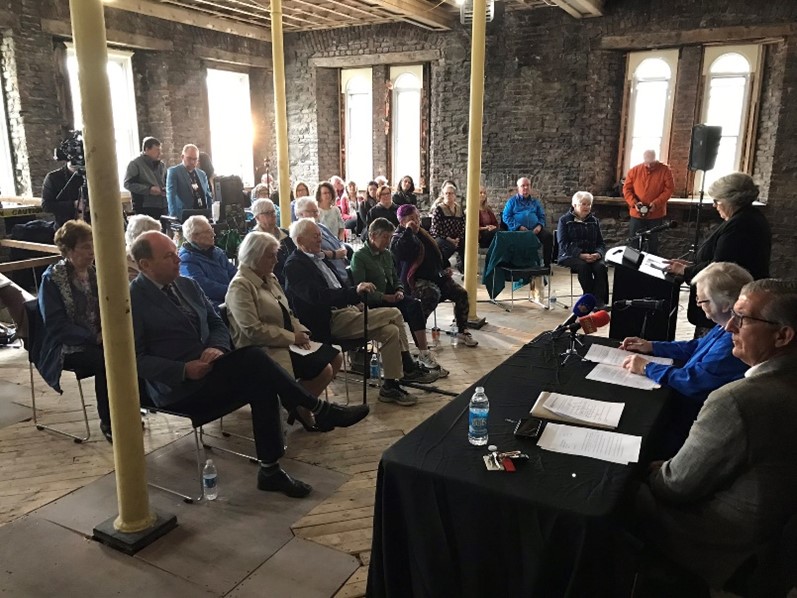
La estructura actual del Convento de la Misericordia se construyó en 1857 y sirvió como convento hasta 2021. En los últimos meses, el edificio ha sido despojado de su estructura fundacional. Olympic Construction ha comenzado la renovación del edificio para transformarlo en una estructura de refugio y vivienda de apoyo que acogerá a 90 personas necesitadas de alojamiento temporal y transitorio. Se espera que el proyecto esté terminado en junio de 2024. Los servicios de apoyo diario serán ofrecidos por The Gathering Place.
Las Hermanas de la Misericordia y las Hermanas de la Presentación, así como las parroquias de la zona, católica romana, anglicana, de la Iglesia Unida de Canadá y presbiteriana, además de otros grupos preocupados por el hambre, la salud, la vivienda y el aislamiento social de una amplia población de la zona central de St. John’s, unieron sus fuerzas a principios de los años noventa para idear un centro que atendiera a la población necesitada de cuidados y servicios. El Gathering Place abrió sus puertas en 1994 con un servicio de alimentación básica y un centro social ubicado en un edificio escolar vacío que había sido acondicionado para este nuevo fin. Desde entonces, el espacio y los servicios y las personas que buscan ayuda han aumentado exponencialmente y siguen haciéndolo. Ahora, a los servicios de The Gathering Place se han añadido viviendas permanentes de apoyo en este proyecto de renovación.
Cobertura mediática del eventoen inglés
Ver: NTV Broadcast: https://ntv.ca/former-mercy-convent-soon-to-be-converted-into-shelter-for-the-gathering-place/ (3:03)
Leer: CBC text: https://www.cbc.ca/news/canada/newfoundland-labrador/gathering-place-two-million-dollars-new-housing-1.6860584
VOCM coverage: https://vocm.com/2023/05/31/gathering-place-converting-former-mercy-convent-to-expand-operations/


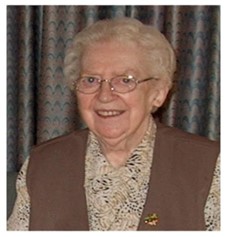 It is fitting that having celebrated
It is fitting that having celebrated  Alice Maud Gladney, known to us as Sister Mary Bernard, was born in Portugal Cove in December of 1883. Her reception into the Sisters of Mercy in April 1902 was the first of many reception and profession ceremonies to take place in the new Littledale chapel, constructed in that same year as part of the Talbot Wing on the Littledale property..
Alice Maud Gladney, known to us as Sister Mary Bernard, was born in Portugal Cove in December of 1883. Her reception into the Sisters of Mercy in April 1902 was the first of many reception and profession ceremonies to take place in the new Littledale chapel, constructed in that same year as part of the Talbot Wing on the Littledale property..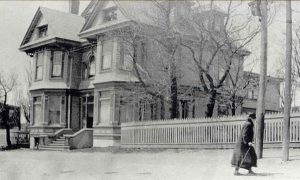
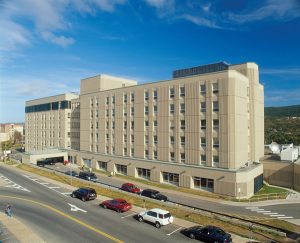
 What must have been their thoughts as they looked upon the forbidding landscape with its towering rocky c liffs and craggy head lands ? Although they had seen poverty in Ireland, t he abject poverty of this place with its rude shacks and derelict fishing stages perched on the side of the hills, would have seared their hearts and minds. Sister Francis had lived in the colony for six years, but for Sisters Ursula and Rose the scene before them must have caused some dismay and distress.
What must have been their thoughts as they looked upon the forbidding landscape with its towering rocky c liffs and craggy head lands ? Although they had seen poverty in Ireland, t he abject poverty of this place with its rude shacks and derelict fishing stages perched on the side of the hills, would have seared their hearts and minds. Sister Francis had lived in the colony for six years, but for Sisters Ursula and Rose the scene before them must have caused some dismay and distress. ¿Qué debieron de pensar al contemplar el imponente paisaje de acantilados rocosos y escarpados promontorios? Aunque habían visto la pobreza en Irlanda, la abyecta pobreza de este lugar, con sus rudimentarias chozas y sus abandonadas etapas de pesca encaramadas en las laderas de las colinas, les habría abrasado el corazón y la mente. La hermana Francis había vivido en la colonia
¿Qué debieron de pensar al contemplar el imponente paisaje de acantilados rocosos y escarpados promontorios? Aunque habían visto la pobreza en Irlanda, la abyecta pobreza de este lugar, con sus rudimentarias chozas y sus abandonadas etapas de pesca encaramadas en las laderas de las colinas, les habría abrasado el corazón y la mente. La hermana Francis había vivido en la colonia Sisters of Mercy from Newfoundland and Peru now minister in two areas of the country – in Puerto Eten, Reque and Eten, in the Chiclayo region and in Huarmey, Casma, Ancash. Eight sisters of the Congregation of the Sisters of Mercy of Newfoundland (including four native Peruvians) work with the people, especially poor people, in towns and small villages in these two regions of Peru.
Sisters of Mercy from Newfoundland and Peru now minister in two areas of the country – in Puerto Eten, Reque and Eten, in the Chiclayo region and in Huarmey, Casma, Ancash. Eight sisters of the Congregation of the Sisters of Mercy of Newfoundland (including four native Peruvians) work with the people, especially poor people, in towns and small villages in these two regions of Peru.
 Educational programs and materials, e.g. reading materials, computers, student supplies are made available when resources allow. Emphasis is placed on working with women in areas of family care, health, nutrition, sewing, gardening, etc. Opportunities are provided for men and women to develop skills in carpentry and farming of family gardens – a cooperative venture to help people help themselves. Medical needs in the form of prescription drugs, diagnostic tests, x-rays, and special procedures or treatments are also provided through the fund.
Educational programs and materials, e.g. reading materials, computers, student supplies are made available when resources allow. Emphasis is placed on working with women in areas of family care, health, nutrition, sewing, gardening, etc. Opportunities are provided for men and women to develop skills in carpentry and farming of family gardens – a cooperative venture to help people help themselves. Medical needs in the form of prescription drugs, diagnostic tests, x-rays, and special procedures or treatments are also provided through the fund.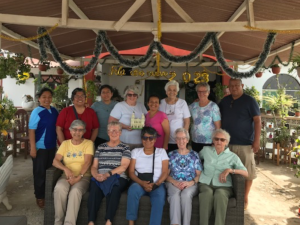 Our Sisters of Mercy now minister in two areas of the country – in Puerto Eten, Reque and Eten, in the Chiclayo region and in Huarmey, Ancash. Six sisters of the Congregation of the Sisters of Mercy of Newfoundland (including four native Peruvians) work with the people, especially those made poor, in towns and small villages in these two regions of Peru.
Our Sisters of Mercy now minister in two areas of the country – in Puerto Eten, Reque and Eten, in the Chiclayo region and in Huarmey, Ancash. Six sisters of the Congregation of the Sisters of Mercy of Newfoundland (including four native Peruvians) work with the people, especially those made poor, in towns and small villages in these two regions of Peru.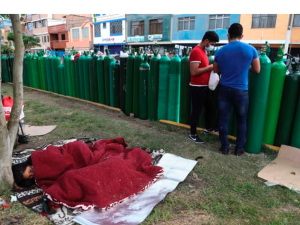 time. Peru was affected enormously by the onslaught of Covid and its health system collapsed totally. Together with our co-workers, the Conference of Religious of Lima, and The Conference of Religious of Chimbote, plans were made to look for and purchase an Oxygen Plant for the city of Chimbote.
time. Peru was affected enormously by the onslaught of Covid and its health system collapsed totally. Together with our co-workers, the Conference of Religious of Lima, and The Conference of Religious of Chimbote, plans were made to look for and purchase an Oxygen Plant for the city of Chimbote. In the Diocese of Chiclayo the Sisters had much support from Caritas organization, along with many individuals and NGOs, especially for their outdoor neighborhood kitchens . These kitchens are the main way people receive a hot meal each day.
In the Diocese of Chiclayo the Sisters had much support from Caritas organization, along with many individuals and NGOs, especially for their outdoor neighborhood kitchens . These kitchens are the main way people receive a hot meal each day. financial resources to obtain medical supplies and food for the people. Other aid came from the Peruvian government and other international agencies.
financial resources to obtain medical supplies and food for the people. Other aid came from the Peruvian government and other international agencies. These last couple of years the Mission Fund has been able to respond to many needs caused by anti-government protests in the country when people could not work as usual; then the very heavy rains and floods have taken away not only peoples place of work, but many have lost homes and possessions. The fund has been used to form comedores and ollas communes (dining areas and common pots) and was able to lessen hunger and disease in many pueblos. Migrants, older people, and children are a special concern for our communities and the Mission fund works constantly with our lay people and coordinators to identify their needs and respond.
These last couple of years the Mission Fund has been able to respond to many needs caused by anti-government protests in the country when people could not work as usual; then the very heavy rains and floods have taken away not only peoples place of work, but many have lost homes and possessions. The fund has been used to form comedores and ollas communes (dining areas and common pots) and was able to lessen hunger and disease in many pueblos. Migrants, older people, and children are a special concern for our communities and the Mission fund works constantly with our lay people and coordinators to identify their needs and respond.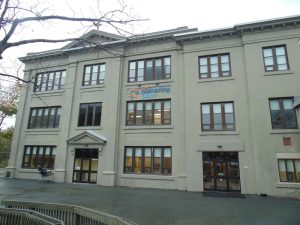

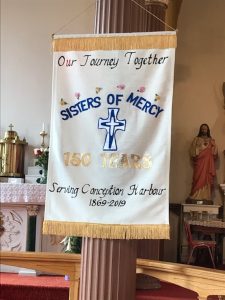 On Tuesday May 21 about thirty of us attended a grand celebration in the parish of Eucharist followed by a hot roast beef dinner. Sister Roisin Gannon represented the Presentation Sisters. Bishop Anthony Daniels surrounded by seven priests of the Grand Falls Diocese celebrated Eucharist in St. Anne’s Church with participation of the sisters and parishioners in readings, music and other moments in the liturgy. The church was sparkling and beautifully decorated with roses. A large banner hung in the church acknowledging the 150 years’ anniversary – Our Journey Together! At the end of Mass, a plaque was presented to the Congregation which will be placed in the church to commemorate the anniversary. In his homily Bishop Daniels connected the call and ministry of the sisters to that of the early disciples of Jesus and gratefully commended their life and ministry among the people of Conception Harbour and surrounding area.
On Tuesday May 21 about thirty of us attended a grand celebration in the parish of Eucharist followed by a hot roast beef dinner. Sister Roisin Gannon represented the Presentation Sisters. Bishop Anthony Daniels surrounded by seven priests of the Grand Falls Diocese celebrated Eucharist in St. Anne’s Church with participation of the sisters and parishioners in readings, music and other moments in the liturgy. The church was sparkling and beautifully decorated with roses. A large banner hung in the church acknowledging the 150 years’ anniversary – Our Journey Together! At the end of Mass, a plaque was presented to the Congregation which will be placed in the church to commemorate the anniversary. In his homily Bishop Daniels connected the call and ministry of the sisters to that of the early disciples of Jesus and gratefully commended their life and ministry among the people of Conception Harbour and surrounding area.